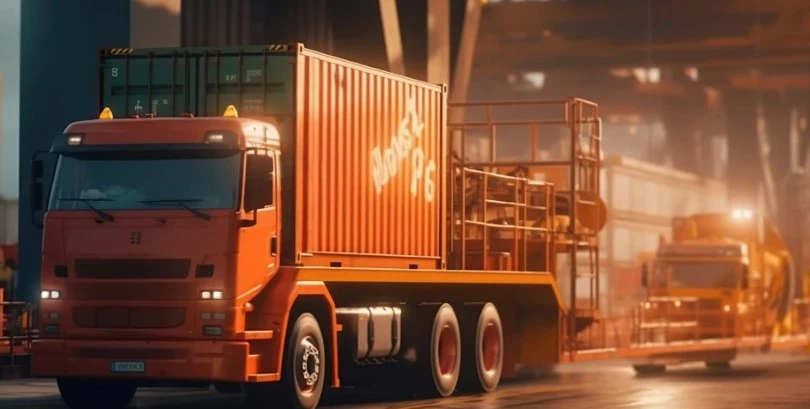
Canadian Customs Clearance is the process by which goods entering Canada are inspected, documented, and authorized for entry. It is a vital step in international trade, ensuring that goods comply with Canadian regulations and are safe for importation. During the clearance process, Canadian customs officers review the documentation provided by the importer, such as invoices, certificates of origin, and shipping documents. They also examine the goods themselves to verify their contents, value, and compliance with Canadian laws. This process helps protect Canadian consumers, businesses, and the economy by ensuring that imported goods meet the necessary standards and do not pose any risks to public health or safety.
Why is Customs Clearance important?
Customs clearance is a vital step in the international shipping process and plays a crucial role in ensuring the smooth flow of goods across borders. Understanding the importance of customs clearance is essential for businesses and individuals involved in international trade. Customs clearance involves the submission of necessary documents, payment of duties and taxes, and compliance with various regulations and requirements. By going through the customs clearance process, goods can be legally imported or exported, ensuring compliance with the laws of the importing or exporting country. Failing to comply with customs clearance requirements can result in delays, penalties, and even the seizure of goods. Therefore, having a clear understanding of the customs clearance process is essential for avoiding potential pitfalls and ensuring the efficient movement of goods across borders.
Key players in the Canadian Customs Clearance Process
Understanding the Canadian customs clearance process involves knowing the key players involved. These players include the importer, the customs broker, and the Canada Border Services Agency (CBSA). The importer is responsible for bringing goods into Canada and ensuring compliance with customs regulations. The customs broker acts as a liaison between the importer and the CBSA, assisting with documentation and ensuring that all necessary paperwork is in order. The CBSA is the government agency responsible for enforcing customs and immigration laws, conducting inspections, and assessing and collecting duties and taxes. By understanding the roles of these key players, importers can navigate the customs clearance process more effectively and avoid potential delays or penalties.
Documents required for Customs Clearance
Understanding the Canadian customs clearance process can be complex, but knowing the documents required can help streamline the process. When importing goods into Canada, you will need to provide important documents such as a commercial invoice, bill of lading, and a packing list. These documents not only provide crucial information about the goods being imported, but they also serve as proof of value and origin. Additionally, depending on the nature of the goods, you may need to provide additional documents such as permits or certificates. Ensuring that you have all the necessary documents in order will help ensure a smooth customs clearance process and avoid any delays or penalties.
Steps involved in the Customs Clearance Process
The Customs Clearance Process is a vital aspect of importing goods into Canada, and understanding its steps is crucial for smooth and efficient trade. The process begins with the submission of necessary documents, such as the commercial invoice, bill of lading, and packing list, to the Canada Border Services Agency (CBSA). Once the documents are received, the CBSA conducts a risk assessment and may request additional information or conduct a physical inspection of the goods. After the assessment, the CBSA determines the duties and taxes payable and issues a release or holds the goods for further examination. Familiarizing yourself with these steps will help you navigate the Customs Clearance Process with confidence and avoid any delays or penalties.
Preparing your shipment for Customs Clearance
Preparing your shipment for Customs Clearance is an essential step in ensuring a smooth and efficient process. Many people may not be aware of the intricate details involved in this stage, but it is crucial for avoiding delays or even potential penalties. To properly prepare your shipment, you need to gather all the necessary documentation, such as commercial invoices, packing lists, and certificates of origin. Additionally, it is important to accurately classify your goods according to the Harmonized System (HS) codes and provide detailed descriptions of the items. By following these guidelines and being proactive in your preparation, you can navigate the Canadian Customs Clearance process with ease and minimize any potential issues that may arise.
Common challenges in the Customs Clearance Process
Navigating the Canadian customs clearance process can be complex and daunting, but understanding the common challenges can help streamline the process. One of the most significant challenges is ensuring compliance with the ever-changing regulations and requirements imposed by the Canadian government. Importers must stay up to date with the latest rules to avoid delays and potential penalties. Another common challenge is dealing with the extensive paperwork involved in customs clearance. Importers must accurately complete various forms, such as the Commercial Invoice and the Canada Customs Invoice, to facilitate smooth clearance. Additionally, managing the payment of duties and taxes can be a challenge, as importers must calculate and pay the appropriate fees to ensure compliance. By being aware of these challenges and seeking expert guidance, importers can navigate the Canadian customs clearance process successfully and avoid costly mistakes.

